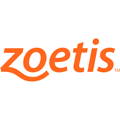 Pork producers battling swine respiratory disease associated with Mycoplasma hyopneumoniae (M. hyo) now have more flexibility when using Lincomix® (lincomycin hydrochloride) Type A medicated article, thanks to a new dosing level approved by the U.S. Food and Drug Administration.
Pork producers battling swine respiratory disease associated with Mycoplasma hyopneumoniae (M. hyo) now have more flexibility when using Lincomix® (lincomycin hydrochloride) Type A medicated article, thanks to a new dosing level approved by the U.S. Food and Drug Administration.
The popular feed medication may be administered at 100 to 200 grams per ton of feed for 21 days to reduce the severity of respiratory disease associated with M. hyo. Previously, Lincomix had to be used at the rate of 200 grams per ton of feed to reduce the severity of swine respiratory disease caused by M. hyo.

Lower Dose Efficacy
“For many swine herds, the lower 100-gram dose rate of Lincomix for M. hyo is effective and less costly for pork producers,” said Michael Senn, DVM, MS, associate director, pork technical services, Zoetis.
He cited a recent study involving more than 1,600 pigs at eight U.S. swine farms where M. hyo was present. The lower dose rate of Lincomix was shown to be effective against this pathogen.
Pigs that received the medication at the rate of 100 grams/ton of feed for 21 days had better average daily gain, feed efficiency and final bodyweight compared to untreated controls. The differences were significant (p < 0.05). Bodyweight alone was 4.17 pounds better among treated pigs, he said.
Holistic Approach
Lincomix is the only feed medication labeled for reducing the severity of M. hyo, a leading cause of swine pneumonia. M. hyo is estimated to be present in 50% of U.S. swine herds. It not only causes poor performance, it also predisposes pigs to other respiratory infections and can be a component of porcine respiratory disease complex, he explained.
Effective management for M. hyo, however, requires more than feed medication, said Dr. Senn, who recommended taking a holistic approach that considers all available tools.
“Vaccination to help reduce M. hyo shedding, long-acting injectable antimicrobials, careful management of replacement gilts and good biosecurity as well as feed medication may be necessary. Herd veterinarians can help devise a suitable plan for individual swine operations,” he added.
Added Convenience
Dr. Senn noted that the 100-gram dose rate is also approved for control of porcine proliferative enteropathies (ileitis) caused by Lawsonia intracellularis and the treatment of swine dysentery, “That gives veterinarians and producers the option of using one feed medication for managing both respiratory and enteric diseases, where needed,” he added.
Veterinarians and producers can get diagnostic support from Zoetis to help guide their decisions. Through its STOMP® diagnostics program, Zoetis has samples tested at independent labs for M. hyo detection to validate the need for a Lincomix veterinary feed directive (VFD).
“We can design feeding protocols that include Lincomix, help train herd caregivers, train feed-mill staff and conduct feed assays. Overall, our program is designed to reduce M. hyo’s economic impact and ensure VFD compliance,” Dr. Senn said.

Jan. 12, 2018 — Zoetis


